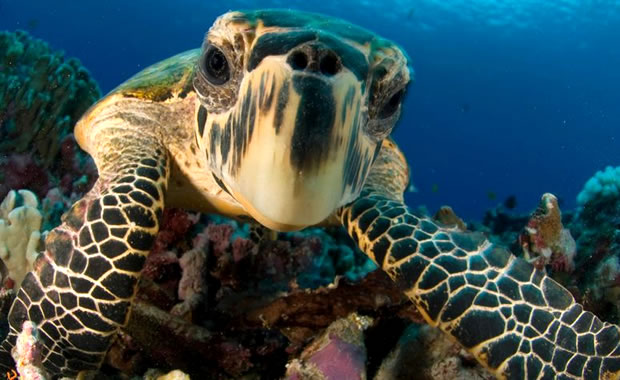Creature Profile
The vulnerable Indo-Pacific hump-backed dolphin is a mammal from the family Delphinidae. It is commonly identified with names such as Chinese white dolphin, Indian Ocean dolphin, Sousa, and pink dolphin. It measures an average of nine feet in length and weighs an average of 600 lbs. Males are generally heavier than females. This species possesses a distinct hump at the dorsal fins base as suggested by its name. Its color varies by stage of development and geographical region. Generally the young are grayish on the back and adults are gray with a pinkish tinge on the same part. The ventral side in both adults and young is lighter. It has a sturdy body with a beak that is long and relatively narrow. A round-shaped melon extends downward to this beak. It has large and well rounded flippers.
The Indo-pacific hump-backed dolphin feeds on fish living in reef environments, estuarine fishes, and it also follows trawlers and feeds on organisms trapped in them. It also feeds on cephalopods but rarely feeds on crustaceans. It lives in tropical areas and warm areas, bays and open coasts, rocky reefs, sand banks and mud bunks areas, and mangrove swamps. Birthing among Indo-Pacific hump-backed dolphins peaks in May and June. The speices, however reproduces throughout the year. After a gestation period of 10 to 12 months, one calf is born by the expectant female. The calf is dark gray in color when born. The mother nurses this calf for about five years.
Threats facing Indo-Pacific hump-Back dolphins include overfishing leading to exhaustion of stocks of fish which the species relies on for food, boat traffic, being caught in fishing gillnets and trawls, use in the by-catch industry, environmental pollution, and disturbances by activities such as bridges constructions and underwater explosions. Conservation actions include listing in Appendix I of CITES, long-term monitoring and assessment of environmental impact in Chinese waters in the mainland, and in Hong Kong there is establishment of several marine parks. No data exists on the estimated world population total. There is a continued decline in numbers of this species in areas where it existed natively. These conservation measures have helped the species, but it remains under-protected in most of the areas where it occurs.
Wikipedia Article

|
Wikipedia Article Copyright Notice: This article is licensed under the GNU Free Documentation License. It uses material from the Wikipedia article "Chinese white dolphin". |
April 1, 2017
Glenn, C. R. 2006. "Earth's Endangered Creatures - Indo-pacific Hump-backed Dolphin Facts" (Online). Accessed 4/28/2024 at http://earthsendangered.com/profile.asp?sp=13061&ID=4.
Need more Indo-pacific Hump-backed Dolphin facts?




